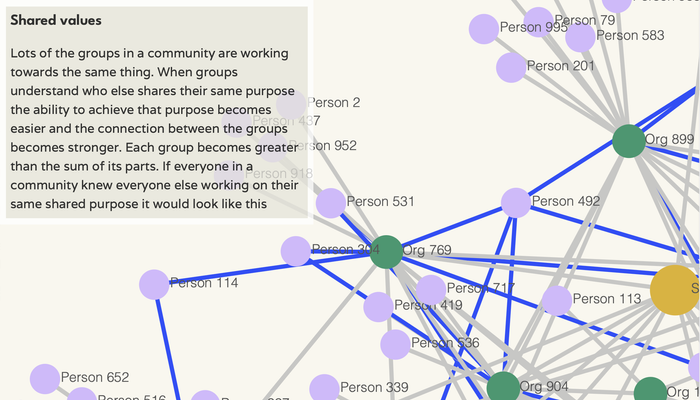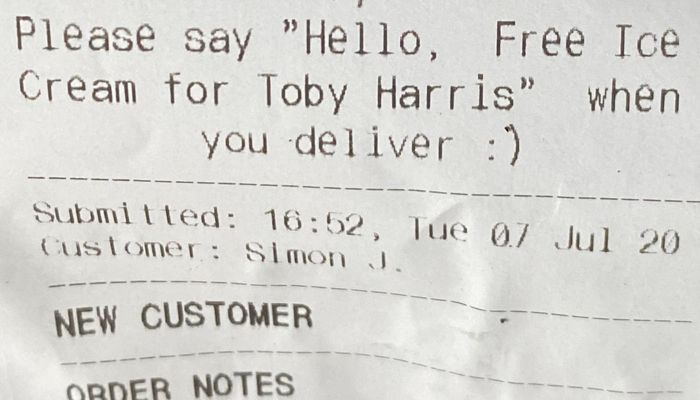As COVID19 hit, some communities proved more resilient than others. What became Understory was a response to why, from Free Ice Cream and the Onion Collective. I’d led a fun workshop for the Onions, and so had seen their community-building work first-hand. Too often talked about as an intangible, they had some ideas about community resilience and wanted – needed – to start to quantify it. With FIC’s Sam and Simon they got funding to do that. And not just in their home town, they were funded to develop a service to help communities of any shape and form.
Concretely, it’s a collaborative platform to map social capital and explore resilience and other emergent network properties. And I made it work.
The basic idea is to hold a workshop in the community where a map of who deals with whom is made. The group is then taken on a tour of that map, telling a story of how social capital allows communities to achieve things, all through their own data. The community can then, in their own time, learn from the data, act on it, and expand it as required.
As this was inspired by the lockdowns to stop the spread of COVID19, the not-so-basic idea is to apply shocks to that network; by running simulations the dynamic qualities of these communities can be explored, and done so through playful interaction.
To pick that apart into what it took –
-
Collaborative surveys to get joined-up data.
The work was sold to me as server-based simulation work, but we quickly realised that getting the community data was going to be most of the work for a minimum-viable product. Cue a client app to serve forms, where what is known about the community so far can be suggested as answers. -
Real-time results to reward incremental effort.
For this to work in a workshop, the moment somebody types in a name for the first time, all the other clients need to be able to suggest that answer. For this to excel in a workshop, the moment somebody hits enter, what their answers ‘do’ needs to be seen: the new nodes-in-the-community need to appear, as the new links between them pull and push the whole into a new form. In both cases, from the first answer on, entering data is rewarded, individually and as a mutual endeavour. -
Flexibility in what a survey might ask, and how those answers contribute to the dataset.
Ideas about community evolve, and different communities are just that: different. So the questions cannot be set in stone. Every community in Understory is backed by its own question set, documented in a way that allows follow-up questions (e.g. answers can reference previous answers), relates the answers to the dataset being built (e.g. suggestions and then contribution), and establishes what privacy constraints apply where. -
Privacy and progressive disclosure.
To map social capital is to deal in personally identifying information. Privacy has to be designed-in, legally. But also for product success. Initially, a privacy story is needed for buy-in within the community. Then, an anonymisation story is needed for longevity and relevance beyond the community. Privacy and stable pseudonyms are central to the product concept, and technical implementation. -
Data-visualisation for the lay-person and expert alike.
An Understory dataset defines interconnections between a set of entities. To grok this dataset, cue a visualisation client, in the form of an interactive force-directed network diagram. Cue a step-by-step tour, applying the Onion’s thoughts on social capital as a deductive analysis of the dataset for the lay-person. Cue exploration tools, filtering out nodes and remapping links, for inductive discovery by the curious. Cue descriptive statistics tied to what can be seen for experts.



